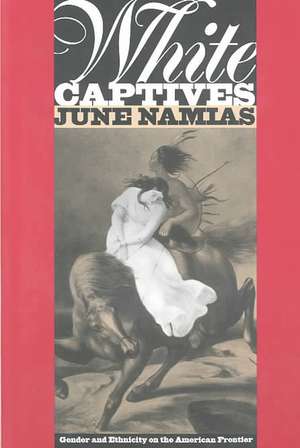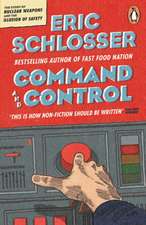White Captives: English Language and Literature; 140
Autor June Namiasen Limba Engleză Paperback – 31 mar 1993
Preț: 395.54 lei
Nou
Puncte Express: 593
Preț estimativ în valută:
75.70€ • 78.93$ • 62.91£
75.70€ • 78.93$ • 62.91£
Carte tipărită la comandă
Livrare economică 20 martie-03 aprilie
Preluare comenzi: 021 569.72.76
Specificații
ISBN-13: 9780807844083
ISBN-10: 080784408X
Pagini: 400
Dimensiuni: 158 x 234 x 27 mm
Greutate: 0.59 kg
Ediția:New.
Editura: University of North Carolina Press
Seria English Language and Literature; 140
ISBN-10: 080784408X
Pagini: 400
Dimensiuni: 158 x 234 x 27 mm
Greutate: 0.59 kg
Ediția:New.
Editura: University of North Carolina Press
Seria English Language and Literature; 140
Textul de pe ultima copertă
White Captives offers a new analysis of Indian-white coexistence on the American frontier. June Namias shows that visual, literary, and historical accounts of the capture of Euro-Americans by Indians during the colonial Indian Wars, the American Revolution, and the Civil War are commentaries on the uncertain boundaries of gender, race, and culture. She demonstrates that these captivity materials, which most often feature as victims white women and children (the most vulnerable members of their communities), vividly portray anxieties about gender and ethnicity on the frontier and in American society. Namias begins by comparing the experiences and representations of male and female captives over time and on successive frontiers, from colonial New England to mid-nineteenth-century Minnesota, and explores how the stories transformed victims of historical circumstance into heroes and heroines. She then uses the narratives of three captives - Jane McCrea, Mary Jemison, and Sarah Wakefield - as case studies, arguing that they describe the fears of sexual contact between native cultures and white settlers and illustrate issues of female survival, independence, and competence. Moreover, she finds that these and other stories also reflect the major role of women and children in the migration process. According to Namias, both the historical reality and the reworked tales of capture offered white Americans new ways of looking at gender and ethnic relations by contrasting their own roles and value with those presumed to be Indian. Thus, while elements of horror, propaganda, mythmaking, and ethnographic documentary characterized the accounts, captivity materials served a larger purpose by providinga framework for notions of gender and cultural conflict on the frontier.















